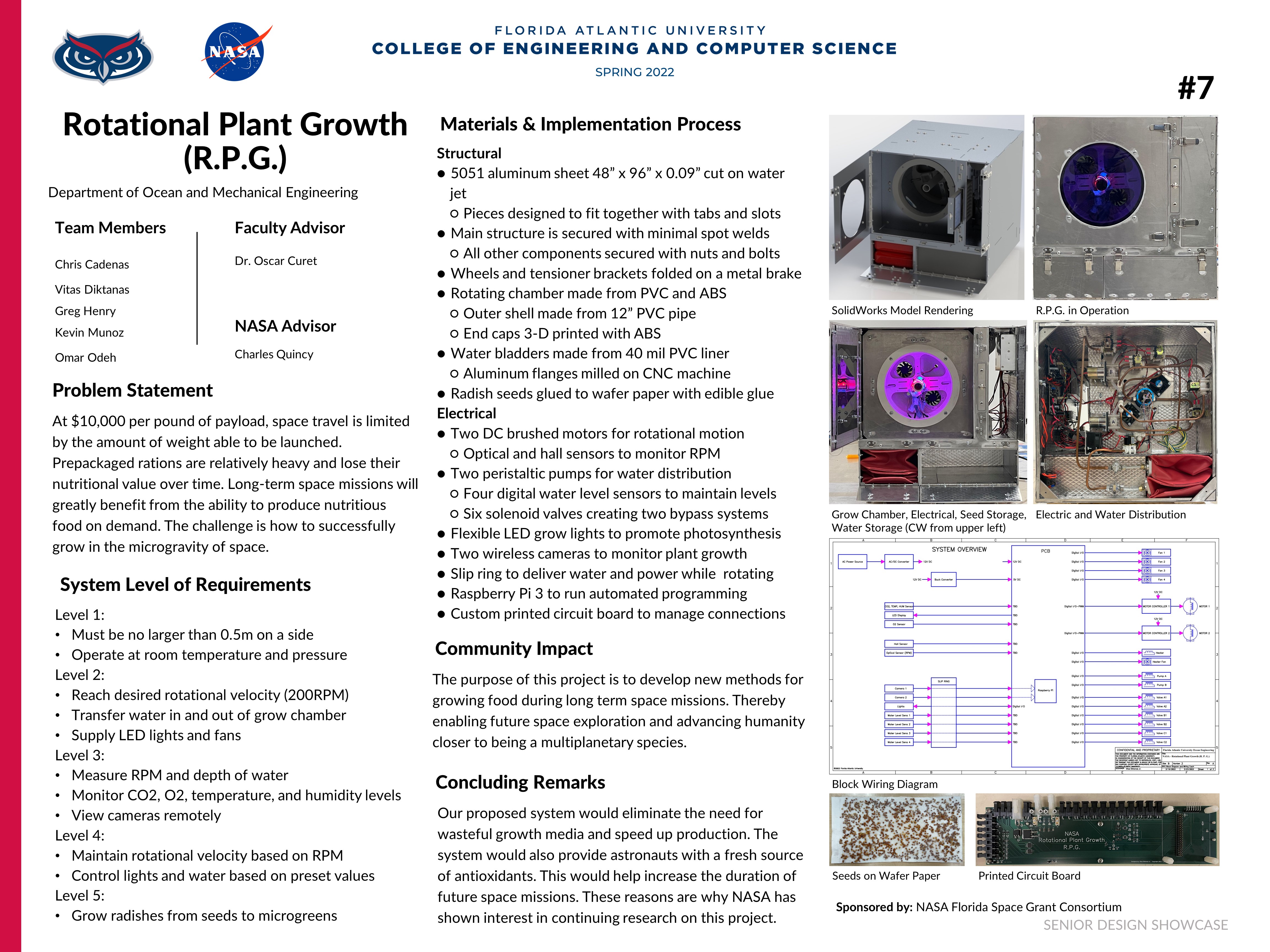Rotational Plant Growth (R.P.G.)
Department of Ocean and Mechanical Engineering
Overview
Long-term space missions will greatly benefit from the ability to produce nutritious food on demand. At $10,000 per pound of payload, space travel is limited by the amount of weight able to be launched. Prepackaged rations are relatively heavy and lose their nutritional value over time The challenge is how to successfully grow in the microgravity of space. Gravity influences the physics of everyday life, and its absence creates unique complications that can have adverse effects on plant development. This project details the construction of an automated system capable of growing radishes from seeds to microgreens in any gravitational environment. A rotating internal chamber demonstrates the ideal speed where water is evenly distributed along its inside circumference. The rotation produces a centrifugal force capable of mimicking or even overpowering gravitational forces. This allows for growth in any orientation. Plant yields from this system should be comparable to traditional hydroponic methods.
Community Benefit: The purpose of this project is to develop new methods for growing food during long term space missions, thereby enabling future space exploration and advancing humanity closer to being a multiplanetary species.
Team Members
Sponsor
|
NASA Florida Space Grant Consortium and FAU Office of Undergraduate Research and Inquiry |

|
